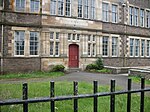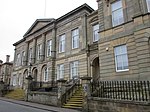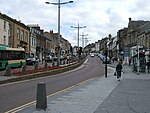New Lanark

New Lanark is a village on the River Clyde, approximately 1.4 miles (2.3 kilometres) from Lanark, in Lanarkshire, and some 25 miles (40 km) southeast of Glasgow, Scotland. It was founded in 1785 and opened in 1786 by David Dale, who built cotton mills and housing for the mill workers. Dale built the mills there in a brief partnership with the English inventor and entrepreneur Richard Arkwright to take advantage of the water power provided by the only waterfalls on the River Clyde. Under the ownership of a partnership that included Dale's son-in-law, Robert Owen, a Welsh utopian socialist and philanthropist, New Lanark became a successful business and an early example of a planned settlement and so an important milestone in the historical development of urban planning. The New Lanark mills operated until 1968. After a period of decline, the New Lanark Conservation Trust (NLCT) was founded in 1974 (now known as the New Lanark Trust (NLT)) to prevent demolition of the village. By 2006 most of the buildings have been restored and the village has become a major tourist attraction. It is one of six UNESCO World Heritage Sites in Scotland and an Anchor Point of ERIH – the European Route of Industrial Heritage.
Excerpt from the Wikipedia article New Lanark (License: CC BY-SA 3.0, Authors, Images).New Lanark
New Lanark Road,
Geographical coordinates (GPS) Address Nearby Places Show on map
Geographical coordinates (GPS)
| Latitude | Longitude |
|---|---|
| N 55.66 ° | E -3.78 ° |
Address
Dipper Viewpoint
New Lanark Road
ML11 9DG
Scotland, United Kingdom
Open on Google Maps







